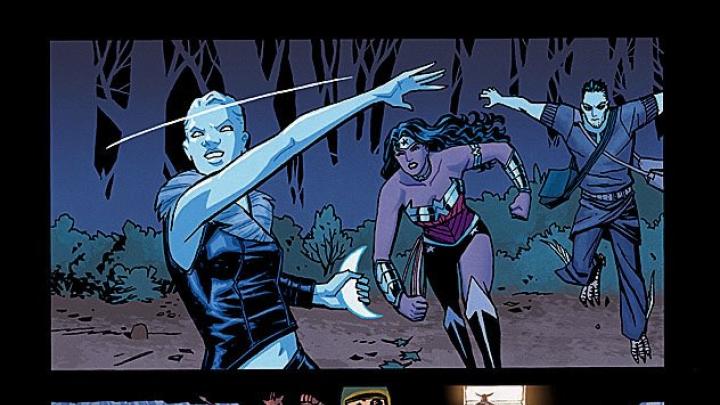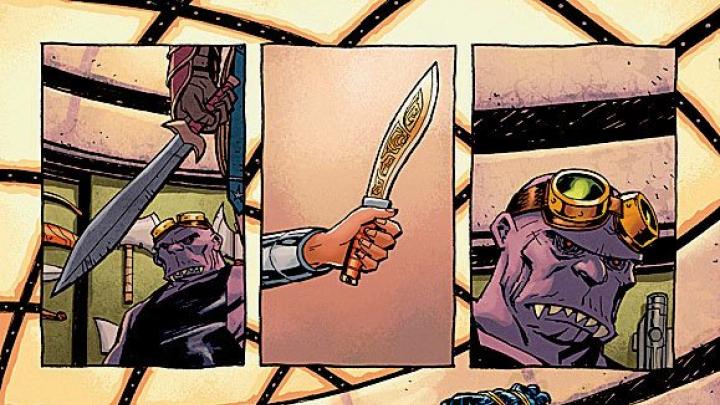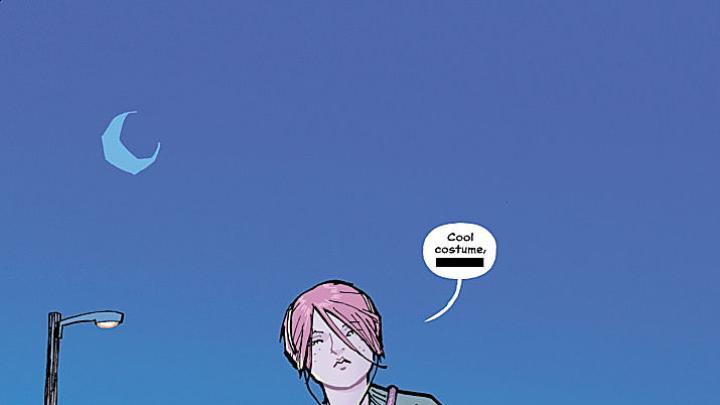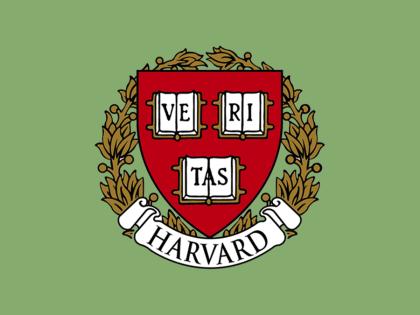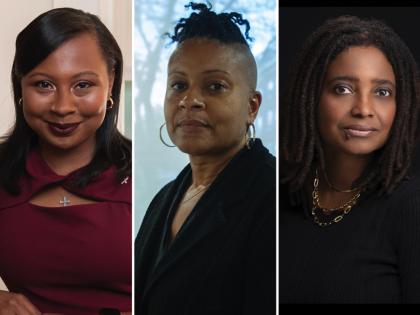Cliff Chiang ’96 can still name the first four comics he ever read—Uncanny X-Men, Alpha Flight, Cloak & Dagger, and Fantastic Four—the adventures of caped crusaders and mutant teens which, in the summer of 1983, he pored over in the back seat on a family road trip to Florida. Back then, he could get his hands on only a few issues at a time, even at 60 cents apiece; the nine-year-old was “on a limited budget,” and distribution was spotty.
“The hunt to find the next one made you really savor each issue when you got it,” he recalls. The wait, he adds, “made it this very mysterious thing that you could never have all at once. You only got a piece of it at a time, which just made you a bigger addict.”
As a comic-book artist—drawing for DC Comics for more than a decade, before going freelance—Chiang is now the dealer, at a time when everything about consumption has changed. Readership has expanded and intensified: fans can get new issues and entire back catalogs digitally, without ever leaving the couch; the books are studied in the ivory tower, and the movies crash through the multiplexes nonstop (and in IMAX-3D). It was during this cultural moment, in 2011, that he and writer Brian Azzarello took on the series for which Chiang is best known: Wonder Woman.

The artist in his Brooklyn studio
Portrait by Robert Adam Mayer
Their 35-issue run largely skirted the comic’s historic gender politics (rooted in twentieth-century American feminism, and kinkily fascinated with strength and submission, as recounted by Kemper professor of American history Jill Lepore in her 2014 book on creator William Moulton Marston ’15, LL.B. ’18, Ph.D. ’21). The reboot gave the iconic character a new origin, as the daughter of Zeus and Hippolyta, and a new mission, protecting a single mother and her infant. Surrounded by allies and foes from Greek myths, Wonder Woman became the new God of War.
The Princess of Amazons still went without pants. But Chiang worked to avoid what he calls a “cheesecake” aesthetic. He drew her as thick-limbed and broad-shouldered, with olive skin and a strong jaw. Although her outfit was cut like a bathing suit, it had the hard gleam of body armor. Where past cover images tended to depict the character in the grip of the monster of the month, Chiang liked to show Wonder Woman in action, not imperiled. She stood at least a head taller than everyone around her. She had the solidity of a refrigerator.
Working in a studio in Brooklyn, which he shares with two other artists and his wife, Jenny Lee, a film editor and producer, Chiang drafts digitally and inks by hand. His style is strikingly crisp and open. “A lot of comics art looks too precious,” he says—as if it’s been fussed over by “someone with a pen, hunched over a page, putting more lines down without any regard to whether they mean anything.” Even in his early jobs, as one of several artists with a hand in Brian K. Vaughan’s Swamp Thing, his work stood out for its sleek lines and clarity, its subtle confidence.
“Comics is such a weird artform,” Chiang muses. “It can’t be as wordy as prose.” In his view, there’s a poetry to the interdependence of words and pictures in comics, and to how panel breaks govern the emotional beats; they can feel leaden and predictable when transferred to the silver screen. “There are times when rhythm and pacing are such a part of it, but at the same time it’s so—still,” he explains. “And you lose that in the cinema, because of the rush forward into the next frame.”
Chiang and Vaughan have reunited for a new series called Paper Girls, at the publisher Image, where creators own the books and characters they work on (unlike at DC and Marvel). Drawing a wholly original comic is new territory for Chiang, who admits, “It was a challenge to rethink a lot of the habits I’d gained from doing superhero stuff over the years.” World-building and character design are unconstrained by fan expectation. The work feels intensely personal.
Set in 1988 outside Cleveland, Paper Girls stars a quartet of everyday 12-year-olds who deliver the news each morning, and stumble on a supernatural mystery. “A lot of us are maybe a little embarrassed of who we were when we were 12,” reflects Chiang. But kids—whatever their fears or insecurities—are uninhibited. “In a way, at that age you’re a much purer character than you are as an adult. And in drawing them, it’s a little bit of wish fulfillment. I want to draw these characters the way they think they are.”
In the preview for Paper Girls #1, it’s Halloween, and a pre-dawn glow washes the town in blue. Nothing’s out of the ordinary but a comet, slashing pink through the sky. Pedaling through the suburbs, a girl is stopped by a group of teenage guys, masked for a night of no good. They close in menacingly—their ringleader has a claw, à la Nightmare on Elm Street—when who comes to the rescue but a trio of girls? “Cool costume,” one of them taunts. They wear leg warmers, Doc Martens, and steely expressions, but there’s not a cape in sight.


